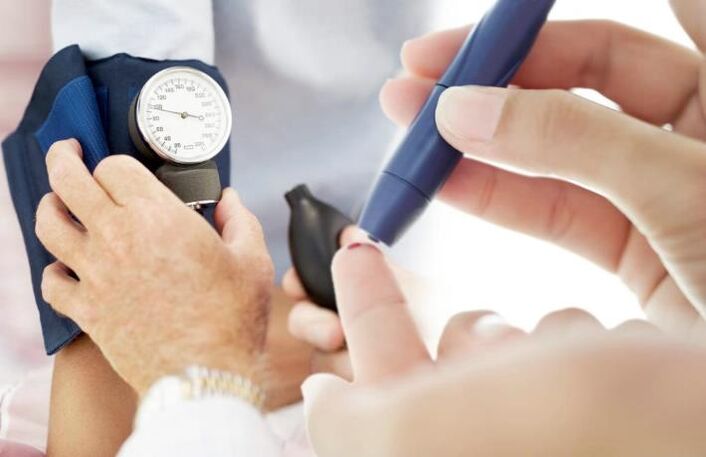There are many types and types of diabetes mellitus, each of which has its own characteristics and differences.
In addition to the well-known names of the types of diabetes mellitus - type 1 and type 2 - we often encounter other types of the disease, which are often thought-provoking. For example, it is not entirely clear what is gestational diabetes mellitus during pregnancy or lada diabetes. So what other types and types of diabetes are there?
Main types
Most often, the term "diabetes type 1" or "diabetes type 2" can be found in the wording of the diagnosis. This classification defines the disease according to the body's need for insulin.

Type 1 diabetes is characterized by the destruction of the special pancreatic beta cells responsible for insulin production. This most often occurs when a person is exposed to a viral infection, as a result of which the immune system begins to produce "aggressors" for the gland cells, which destroy them. As a result, there is a lack of insulin in the blood. without an important hormone like insulin, they literally starve as they "float" toward glucose.
If insulin is introduced into the body from the outside, the cells "happily" begin to consume glucose, while the sugar level normalizes. Therefore, type 1 disease is also called insulin-dependent diabetes mellitus.
When the term "non-insulin-dependent diabetes mellitus" is mentioned, it means type 2 diabetes. Its pathogenesis is based on two key points:
- beta cell pathology;
- violation of insulin sensitivity by insulin-dependent cells of the body.
This condition develops more often in obese people, as obesity leads to the development of resistance (immunity) cells to insulin. In addition to obesity, glucose absorption is also affected by smoking, lack of physical activity and taking certain medications.
Type 3 diabetes
There is type 3 diabetes, which combines the symptoms of type 1 and 2. Namely, the accumulation of fatty tissue in the liver (as in type 2 diabetes) and insulin deficiency (as in type 1 diabetes). In life, type 2 diabetes that responds positively to insulin therapy is type 3. But this type is not recognized by the health organization, so all cases are divided into type 1 and type 2.
This disease is not rare. The reason for this is the increase in the absorption of iodine in the intestine as a result of various pathologies. This leads to type 2 thyrotoxic diabetes with a complex pathogenesis. The treatment with it must be fundamentally different from the usual therapy.
hidden form
Latent diabetes mellitus is a condition in which glucose from food is slowly absorbed, but insulin production remains adequate or elevated. Clinically, latent diabetes does not appear. This form prevents type 2 diabetes. It must be said that the hidden version of diabetes is prediabetes, in this stage it is still possible to influence the state of carbohydrate metabolism.
Latent diabetes can occur for a long time (up to several years). In order to detect it in time, it is necessary to check the blood sugar level frequently, which is especially important for people with predisposing factors (obesity, high blood pressure and taking potassium-lowering diuretics, polycystic ovary syndrome).

If latent diabetes is detected in time, then by following simple prevention rules, this form will never turn into type 2 diabetes. To prevent this, you need to increase physical activity, follow a diet, and control your blood sugar.
It is labile and stable
You may also find wording like "stable and labile diabetes. "So they talk about both type 1 and type 2 diabetes. Use these terms to understand the clinical course of the disease.
Labile diabetes is characterized by a rather severe and unpredictable course. During the day, the blood sugar level changes dramatically, which does not allow choosing the optimal dose of insulin. With this form, acute and late complications occur more often - ketoacidosis, kidney disorders, organ of vision. The labile form is characteristic of adolescence.
The stable form is characterized by a steady course, without a sudden drop in sugar, milder symptoms and a low level of hyperglycemia.
Pregnancy
Gestational diabetes is a form of diabetes that develops during pregnancy. Pregnancy, or lat. pregnancy is pregnancy. The causes of this type of disease have not been reliably established, but hormones produced by the placenta and the mother's body cause physiological insulin resistance. There are certain factors that lead to the development of gestational diabetes. These include:
- late pregnancy;
- familial diabetes;
- smoking;
- obesity;
- stillbirth in previous pregnancies.
If a woman follows the doctor's instructions, has regular examinations, then such an unpleasant disease can be avoided. If diabetes has developed, appropriate insulin treatment and hospitalization are prescribed. The patient is monitored by an obstetrician-gynecologist, an endocrinologist, an internist, an ophthalmologist, and a neurologist. Carbohydrate metabolism usually returns to normal after childbirth.

It is important to note that gestational diabetes can persist after delivery. This diagnosis is valid for 2 months after birth. During this period, the woman must continue the treatment, but with adjustments to the insulin doses calculated by the attending physician or endocrinologist. 2 months after childbirth, a woman undergoes a stress test, which indicates whether carbohydrate metabolism has been violated. If hyperglycemia is detected, the diagnosis is corrected and appropriate treatment is prescribed.
Lada diabetes
Latent diabetes mellitus or lada diabetes is rarely diagnosed due to its latent course. Lada has specific characteristics compared to other forms of diabetes.
- Laboratory tests do not reveal this form. Glucose levels usually do not rise on an empty stomach.
- The first symptoms of the disease appear after 25 years.
- Pregnancy, stress, infectious diseases, rapid weight gain due to fatty tissue can cause clinical symptoms.
- Lada diabetes occurs most often in people who are not obese.
- The symptoms are similar to those of type 2 diabetes, but in a more subtle form.
- Markers of type 1 diabetes can be detected in the patient's blood.
- Lada diabetes is controlled by diet and the intake of hypoglycemic agents.
To determine lada diabetes, special tests are carried out, which are discussed in an article specifically dedicated to this condition.
Mody diabetes
Diabetes mellitus is rarely recognised, it is associated with the mutation of certain genes (there are 8 genes). These genes are responsible for the normal structure of insulin or the optimal development of beta cells. Mody diabetes is classified as mildly progressive and develops in young people (more often in children and adolescents).
Among all diabetics, modal diabetes accounts for 2-5% of cases, but the development of the gestational type is precisely associated with genetic mutations. A reliable diagnosis of type 2 diabetes is possible only with the help of molecular genetic research.

Features of this form process:
- occurs in children
- sometimes the glucose level rises to 8 mmol / l;
- no obesity;
- no insulin resistance;
- The SD is available in two generations;
- The course is similar to type 2 diabetes.
steroid diabetes
Steroid diabetes develops with long-term use of corticosteroid-based drugs or hypercortisolism (syndrome or disease, Itsenko-Cushing). Adrenal hormones have a harmful effect on the beta cells of the pancreas, causing insulin deficiency.
Steroid diabetes mellitus is an insulin-dependent condition. But its clinical course includes some features of type 1 and type 2 diabetes. In addition, the effect of corticosteroids causes a violation of the work of other organs. This diabetes is treated as type 2 diabetes.
Pancreas
Pancreatic DM is a secondary disease. It develops due to the destruction of the pancreas, pancreatitis, stones in the gall bladder and ducts, after gland operations. All these factors lead to a decrease in the number of active beta cells and insulin deficiency. It works like type 1 diabetes.
Other secondary forms
Diabetes of the adrenal gland, pituitary gland, and thyroid gland occurs against the background of excessive amounts of certain hormones in the blood, which leads to the destruction of insulin-producing cells. The clinic is similar to type 1 diabetes with symptoms of damage to other organs and tissues.

























